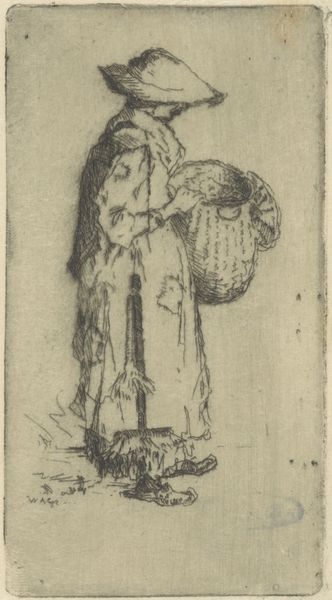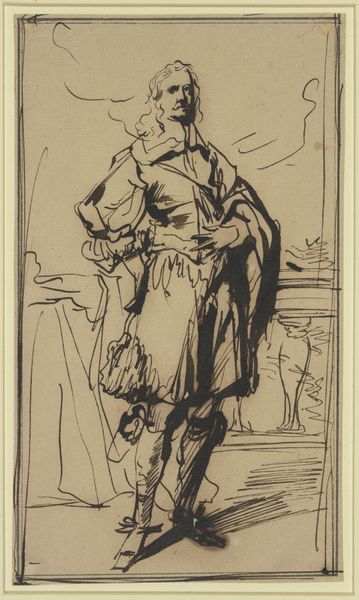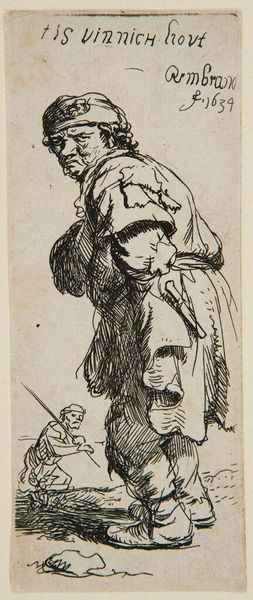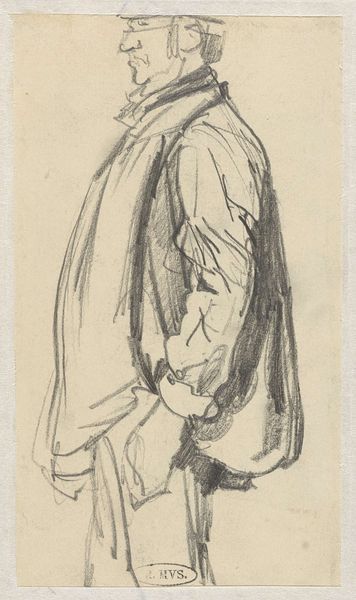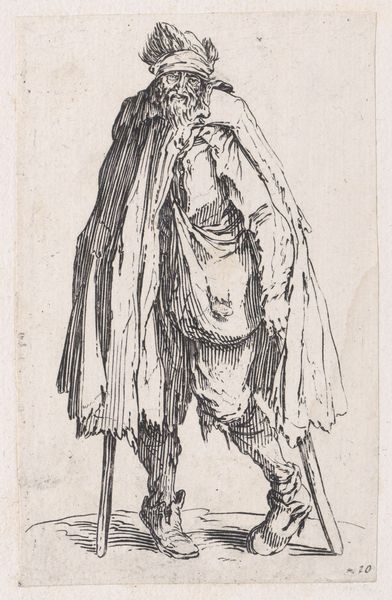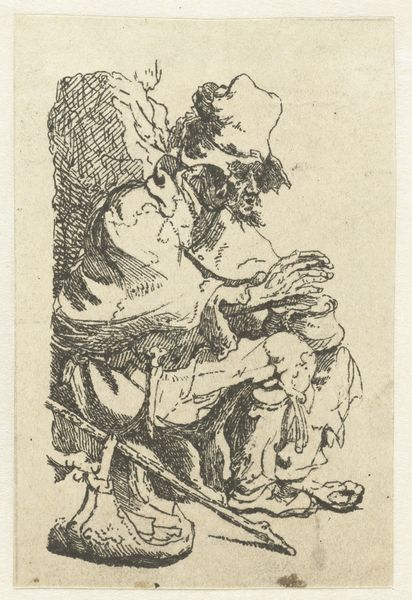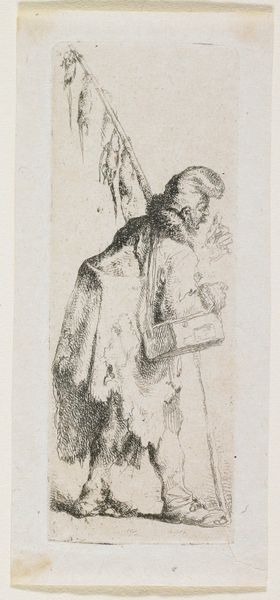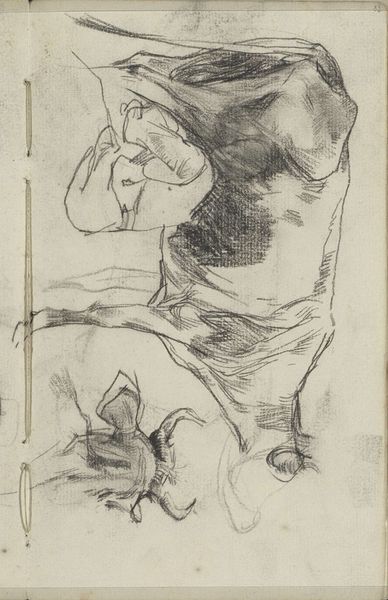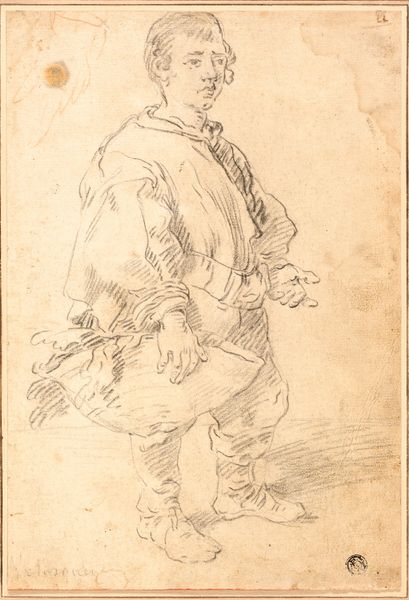
print, etching
#
portrait
#
baroque
#
dutch-golden-age
# print
#
etching
#
figuration
#
genre-painting
Copyright: National Gallery of Art: CC0 1.0
Rembrandt van Rijn created this etching of a peasant in the Dutch Republic in 1634. It is a stark image that seems to capture the spirit of the common folk. In the 17th century, the Dutch Republic was experiencing a golden age of trade and prosperity. But this wealth was not evenly distributed. Rembrandt, who lived and worked in the city of Leiden, would have been acutely aware of the social and economic disparities between the merchant class and the peasantry. The etching may be seen as a commentary on these class divisions. The confident posture of the foreground figure, along with the Dutch phrase which translates as "That's nothing," possibly indicates a kind of pride despite his obvious poverty. Historians of art find meaning in the image through close attention to the details of dress, posture, and cultural context, alongside archival documents that tell us about the artist's world. The true power of the artwork is that it remains open to interpretation.
Comments
No comments
Be the first to comment and join the conversation on the ultimate creative platform.

